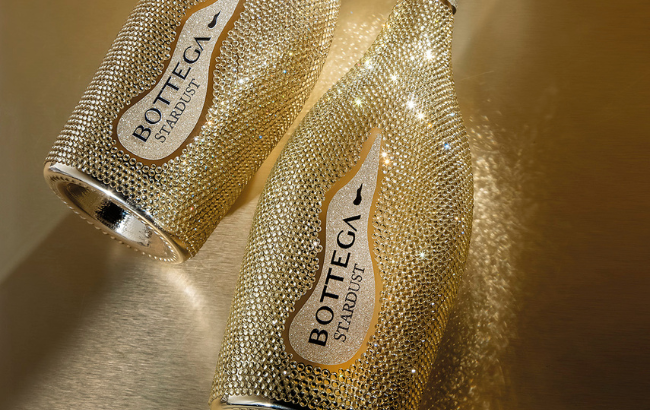What are Champagne’s growth markets of tomorrow?
By Patrick SchmittAs the Champenois see their large, long-standing markets of France, the UK and the US suffer from declining sales volumes, their sights are set on places of potential growth – with one area identified in particular.

That part of the world is the Arabian Peninsula, according to Alex Tarditi, who is Asia-Pacific and Middle-East export manager at Vranken-Pommery Monopole, and, while currently living in Japan, and before that Shanghai, he was based in Abu Dhabi, the capital of the United Arab Emirates (UAE).
Having lived in the city for a little more than two years from 2019 to 2021, and still selling Champagne from the Vranken-Pommery group to the Middle-East, Tarditi has a good sense of the Arabian market, and the possibilities for expanding Champagne sales in a part of the world where there are severe restrictions on the sale and consumption of alcohol, if not an outright ban.
Indeed, as a result of Islamic law (Sharia), the market for drinks is tightly controlled and severely restricted in the Arabian Peninsula, with, currently, only certain areas where sales of alcohol are possible, although there are signs that the situation is slowly loosening.
For the moment, however, as Tarditi reminded db – aside from the more open United Arab Emirates – the market for alcohol in the Arabian Peninsula is mostly for embassies only.
As a result, he says that “the UAE is the place to be”, adding that the growth and potential increase in Champagne sales are primarily in Dubai, as well as the capital, Abu Dhabi.
Noting that the UAE has a population of roughly 11 million people, he said that 90% of these were expatriates, which is “enough to maintain the market”, adding that there is growth in Champagne sales on the back of an enlarging economy, expanding foreign population and increasing numbers of tourists.
While Dubai is the biggest consumer, gaining access to the market for drinks producers can be challenging due to the fact only two companies are allowed to import and distribute alcohol in the city – Maritime and Mercantile International (MMI) and African & Eastern (A&E).
On the other hand, Abu Dhabi has a more open approach to trading drinks, with as many as 10 distributors currently active in the market, with the possibility for more to be established, according to Tarditi.
Challenges aside, it is clearly already a growth market, and becoming a significant source of Champagne sales, fast catching up with Sweden, which, should the UAE overtake, would put the Arabian country in the top 10 worldwide for volume sales of the fine French fizz.
As you can see in the figures below, which comprise the top 30 Champagne markets by shipment volumes for 2023, the UAE is approaching 2.9m bottles in scale.
However, with this volume being worth almost €80m in turnover, in value terms, the nation is in fact in the top 10, with Sweden totalling just under €60m.
Driving such growth is not just a booming economy and growing population, but also a recent relaxation in the rules for purchasing alcohol in Dubai – having decriminalised alcohol in 2020, it scrapped a tax of 30% on alcohol last year, as well as dropping the licence fee needed to buy alcohol in the commercial and tourism hub last January.
It is also worth noting that 67 Pall Mall has said it is planning to expand its new ‘en primeur’ membership to Dubai, among other cities where it does not have a physical presence as “a marker that we are interested in that market”.
As for other parts of the Arabian Peninsula, it is Saudi Arabia that has made the headlines this year as it looks to partially lift its total prohibition of alcohol – with preparations underway to open a liquor store in the capital Riyadh (although it is only for diplomats).
However, Tarditi expects the rules on alcohol to relax further in the near future, once Salman of Saudi Arabia, the world’s oldest living monarch at the age of 88, hands over the throne to his son, Mohammed bin Salman, who wants to boost tourism, and reduce the country’s dependence on oil.
Partner Content
“It is likely that Saudi Arabia will allow [the sale and consumption] of alcohol, but not everywhere,” said Tarditi, “And when the prince becomes king in a few years’ time, he wants to open the country to tourism, and to do that, he will need to open hospitality, which will likely mean allowing alcohol, and other things, like casinos.”
Continuing, he forecast, “Saudi Arabia is the market of tomorrow, but not this year or the next, but five years’ time…. At the end of the day, it will be a strong market, it will be the new Dubai in five to 10 years time, and with even more money to invest.”
As for other areas of growth, as db reported last week, Hong Kong is an area where Champagne demand is growing, with Pol Roger Portfolio MD, James Simpson MW recording that the city is “back up and running” – as born out in the numbers below, with shipments up almost 8% in 2023 to total a little more than 2m bottles.
Meanwhile, Tarditi, who lives in Tokyo, said that Japan – although a large and mature Champagne market – still has potential.
Speaking to db at the inaugural ProWine Tokyo earlier this month, he said, “Japan is big and mature, but we are seeing some growth” – which he added was notable at the top end of the Champagne sector.
“People are willing to spend a lot of money for the right stuff,” he said, noting that “it is quite easy to sell Cuvée Louise,” referring to Pommery’s prestige label, and especially within the upmarket Ginza district of Tokyo, where there is a thriving night market.
Furthermore, Tarditi stressed that Champagne was ingrained into the Japanese fine dining and drinking scene, meaning that the French fizz is not just consumed for celebrations, but in a bar, or with food in a restaurant.
Finally, he said, “There are 125 million people living in Japan, and the population is getting older, but that is a good thing for Champagne, because it means they have more money to spend – people aged 20 to 30 can’t afford to drink Champagne regularly, but those aged 50-70 have enough money to drink Champagne every day.”
Concluding on the subject of Japan, he said, “It is a stable country with an ageing population, which is good for Champagne and the prestige category in particular.”
Read more
Is the Arabian Peninsula the next growth area for fine wine?
CHAMPAGNE SHIPMENTS IN 2023
Ranking in volume
| 2023 | Evolution bottles | Evolution Euros | |||
| Bottles | Euros | 2023/2022 % | 2023/2022 % | ||
| 1 | USA | 26,920,807 | 809,959,735 | -20.2% | -14.5% |
| 2 | UK | 25,534,935 | 550,236,144 | -7.7% | 1.1% |
| 3 | JAPAN | 15,313,163 | 447,665,385 | -7.6% | 3.6% |
| 4 | GERMANY | 11,662,943 | 268,007,430 | -4.8% | 9.2% |
| 5 | ITALY | 9,899,096 | 265,877,790 | -6.8% | 7.2% |
| 6 | AUSTRALIA | 8,898,270 | 175,146,327 | -15.4% | -6.9% |
| 7 | BELGIUM | 8,040,360 | 162,134,237 | -21.7% | -9.8% |
| 8 | SWITZERLAND | 6,061,000 | 165,207,505 | -4.8% | 13.6% |
| 9 | SPAIN | 4,971,993 | 135,093,252 | 1.3% | 17.0% |
| 10 | SWEDEN | 3,089,190 | 59,630,039 | -18.5% | -14.6% |
| 11 | UAE | 2,834,908 | 79,591,654 | 49.5% | 45.5% |
| 12 | CANADA | 2,795,907 | 84,405,943 | -20.0% | -13.6% |
| 13 | THE NETHERLANDS | 2,683,411 | 62,491,119 | -21.3% | -10.3% |
| 14 | SOUTH KOREA | 2,569,678 | 84,281,847 | 9.5% | 25.2% |
| 15 | HONG-KONG | 2,050,525 | 67,132,824 | 7.6% | 12.5% |
| 16 | AUSTRIA | 1,835,298 | 50,148,989 | -1.0% | 13.1% |
| 17 | DENMARK | 1,790,487 | 42,194,958 | -11.6% | 0.0% |
| 18 | SINGAPORE | 1,677,498 | 50,430,709 | 16.1% | 33.9% |
| 19 | MEXICO | 1,580,838 | 49,316,946 | -32.1% | -8.0% |
| 20 | SOUTH AFRICA | 1,420,369 | 36,754,450 | 5.9% | 2.2% |
| 21 | NORWAY | 1,403,095 | 31,191,639 | -4.1% | 3.0% |
| 22 | CHINA | 1,286,013 | 42,798,991 | -5.7% | -4.2% |
| 23 | NEW-ZEALAND | 1,087,961 | 22,782,394 | 21.4% | 49.7% |
| 24 | FINLAND | 833,360 | 17,786,923 | -20.4% | -11.4% |
| 25 | PORTUGAL | 830,155 | 21,651,161 | 0.1% | 17.7% |
| 26 | IRELAND | 787,393 | 18,653,209 | 0.4% | 12.7% |
| 27 | BRAZIL | 722,091 | 14,994,156 | 2.5% | 12.1% |
| 28 | TAIWAN | 710,140 | 26,671,355 | 26.4% | 44.2% |
| 29 | GREECE | 683,993 | 22,443,078 | 7.5% | 24.2% |
| 30 | IVORY COAST | 681,549 | 13,995,989 | 12.6% | 16.5% |
Source : Comité interprofessionnel du vin de Champagne – Epernay
Related news
The 'family spirit' behind Champagne Gardet's 130th anniversary




